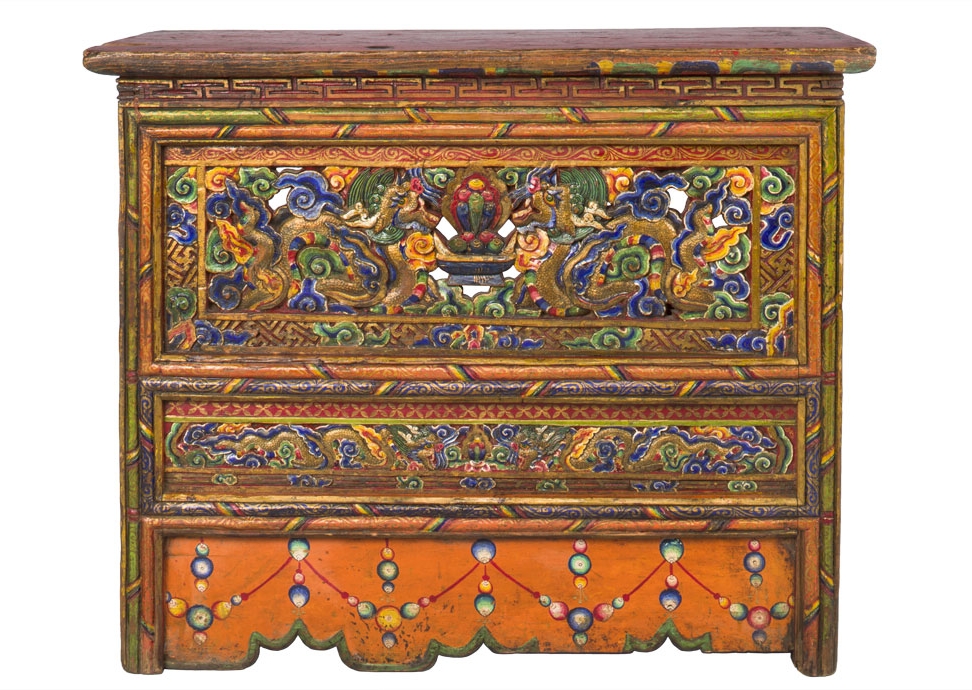
Offering tables like this are used for placing offerings and ritual implements for a lama or ritual specialist to use during ceremonies and would usually be positioned to the right of the throne or seat of the lama performing the ritual. Offering tables vary in height and purpose in Tibetan religious settings. This example is a tall table that was deeply carved and then painted. The carving penetrates the depth of the wood in several areas, especially visible on the front. The central decorated section that occupies the upper portion of the front shows the symbolic Three Jewels flanked by dragons and cloud motifs. Carvings imitating bamboo frame this central panel, which in turn has an inner frame made of clouds and a square knot design. Smaller and narrower parts of the panel are painted with motifs that imitate textile designs. The side panels feature a large bird in a cloud and sitting on a rock. The color palette is typical of that favored by Tibetans, with blue, green, red, and orange and a generous use of gold tones. Interestingly the lower part of the table, which extends below the panels and between well-defined legs, is not carved except for its rounded lower edge that is shaped to imitate hanging fabric. The bright orange is balanced with golden-orange tones in the overall palette of the table. The stylistic elements, construction, and carving suggest that that table was produced in central Tibet, possibly in Lhasa.
28.5”h. x 35.25”w. x 16.25”d.
- https://dev.rubinmuseum.org/images/content/3637/c2012.7__zoom.jpg
- https://dev.rubinmuseum.org/images/content/3637/c2012.7__zoom.jpg

